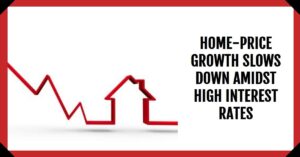The latest data for the S&P CoreLogic Case-Shiller Indices, the leading measure of U.S. home prices, reveal a deceleration in the upward trend for November 2023. Out of the 20 major metro markets, 12 reported month-over-month price decreases.
Year-Over-Year Analysis
The S&P CoreLogic Case-Shiller U.S. National Home Price NSA Index, covering all nine U.S. census divisions, reported a 5.1% annual gain in November, surpassing the 4.7% rise in the previous month. The 10-City Composite exhibited an increase of 6.2%, up from a 5.7% increase in the previous month.
The 20-City Composite posted a year-over-year increase of 5.4%, compared to a 4.9% increase in the previous month. Notably, Detroit reported the highest year-over-year gain among the 20 cities with an 8.2% increase in November, followed by San Diego with an 8% increase. Conversely, Portland saw a 0.7% decrease for the third consecutive month, remaining the only city reporting lower prices in November versus a year ago.
Month-Over-Month Trends
For the first time since January 2023, the U.S. National Index and 20-City Composite posted 0.2% month-over-month decreases in November, while the 10-City Composite posted a 0.1% decrease. After seasonal adjustment, the U.S. National Index and the 10-City Composite saw month-over-month increases of 0.2%, while the 20-City Composite posted a 0.1% increase.
Analysis and Insights
According to Brian D. Luke, Head of Commodities, Real & Digital Assets at S&P DJI, “U.S. home prices edged downward from their all-time high in November.” The streak of nine monthly gains ended, setting the index back to levels last seen over the summer months. Notably, Seattle and San Francisco reported the largest monthly declines, falling 1.4% and 1.3%, respectively.
November's year-over-year gain marked the largest growth in U.S. home prices in 2023. The National Composite rose 5.1%, and the 10-city index rose 6.2%. Detroit maintained its position as the best-performing market for the third consecutive month, accelerating to an 8.2% gain. San Diego notched an 8% annual gain, retaining its second spot in the nation.
Notably, six cities registered a new all-time high in November (Miami, Tampa, Atlanta, Charlotte, New York, and Cleveland), while Portland remained the lone market in annual decline. The Northeast and Midwest recorded the largest gains with returns of 6.4% and 6.3%, respectively. The West showed the slowest gains at 3%. This month’s report revealed the narrowest spread of performance across the nation since the first quarter of 2021.
“The tight disparity speaks to a rising tide across the country, with less evidence of micro-markets bucking the trend,” says Brian D. Luke. The days of markets in the South rising double digits with markets in the Midwest remaining flat are over. The house price decline came at a time when mortgage rates peaked, with the average Freddie Mac 30-year fixed-rate mortgage nearing 8%, according to Federal Reserve data. The rate has since fallen over 1%, which could support further annual gains in home prices.
Future Outlook
The future outlook for U.S. home prices remains uncertain, with the recent decline in November signaling a potential shift in the market. Factors such as mortgage rates and regional disparities will likely continue to influence the housing landscape in the coming months.





